Exploring poetry with middle and high school students can be incredibly rewarding, especially when you introduce them to notable poets whose works have shaped literature, culture, and history.
In this post, we’re highlighting five influential poets—Walt Whitman, Emily Dickinson, Sylvia Plath, Maya Angelou, and Robert Frost. These poets represent a variety of styles, perspectives, and eras, and each one brings something unique to the study of poetry.
Whether you’re a parent, teacher, or homeschooler, helping students connect with these powerful writers can open doors to meaningful conversations about expression, emotion, and the human experience.
Along with a bit of background on each poet, you’ll also find information about a printable poetry activity pack that’s perfect for helping students learn and reflect. These printables are easy to use, student-friendly, and make a great addition to any poetry unit or literature study.
Related: Must-Read Literature Books for High School Students
Why Study Poets and Poetry?
Poetry invites students to think deeply, reflect personally, and connect emotionally. It’s more than just rhyme and meter—it’s about understanding human experiences, expressing ideas creatively, and building empathy.
When students engage with poetry, they develop critical thinking and interpretation skills that go beyond literature. They learn to read between the lines, identify symbolism and tone, and articulate their own thoughts and feelings in new ways.
Studying the lives and works of poets also helps students see how writing can be shaped by personal struggles, historical moments, and cultural movements—giving context to the literature they read.
Notable Poets to Study
These five notable poets each have a unique style and background. Learning about their lives and work helps students better understand and connect with their poetry.
Walt Whitman (1819–1892)
Known as the father of free verse, Walt Whitman changed poetry forever with his flowing, unstructured style. He celebrated nature, democracy, and everyday life. Whitman self-published his most famous collection, Leaves of Grass, and used his writing to capture the spirit of America in the 19th century. As a Civil War nurse, he also witnessed the pain of war firsthand—an experience that shaped some of his most powerful work. His poem “O Captain! My Captain!” is a tribute to Abraham Lincoln and a great piece to discuss leadership, grief, and symbolism.
Emily Dickinson (1830–1886)
Emily Dickinson lived a quiet, reclusive life, writing nearly 1,800 poems—most of which were unpublished until after her death. She had a unique poetic voice, using dashes, slant rhymes, and unexpected punctuation. Her poems often reflect on nature, death, and hope. Dickinson’s mysterious style and deep insight make her work especially engaging for students learning how to interpret figurative language and tone. One of her best-known poems, “Because I could not stop for Death,” personifies death as a gentle companion—perfect for discussing abstract ideas in poetry.
Robert Frost (1874–1963)
Robert Frost’s poetry feels simple at first glance, but it’s full of deep meaning and emotional insight. He’s known for writing about rural life and nature in New England, using everyday language to explore big ideas. Frost won four Pulitzer Prizes and famously recited a poem at President Kennedy’s inauguration. His poem “The Road Not Taken” explores choices and their consequences, making it a favorite for classroom discussions about decision-making and life paths.
Sylvia Plath (1932–1963)
Sylvia Plath’s poetry is raw, emotional, and full of vivid imagery. A child prodigy, she began writing early and published her first poem while still in grade school. Her work explores topics like identity, depression, and womanhood. Plath’s most famous poems, including “Daddy” and “Lady Lazarus,” are often intense, giving students an opportunity to explore how personal struggles and mental health can influence art. Her honest writing style continues to connect with young readers today.
Maya Angelou (1928–2014)
Maya Angelou was a poet, performer, and activist. She is best known for her autobiographical work I Know Why the Caged Bird Sings, but her poetry is just as powerful. Angelou’s themes of resilience, strength, and justice resonate with students from all backgrounds. Her poem “Still I Rise” is an anthem of perseverance and pride—ideal for encouraging students to reflect on their own journeys. Her life, which included time abroad and involvement in the Civil Rights Movement, adds important historical context to her work.
More Poetry Books
150 Most Famous Poems: Emily Dickinson, Robert Frost, William Shakespeare, Edgar Allan Poe, Walt Whitman and many more


Related: Creative Writing Workbook for High School Students
Notable Poets Printable Pack
This free printable poetry activity pack makes it easy to bring each poet to life for your students. It includes brief biographical information, famous quotes, fun facts and engaging activities tailored to each poet’s style and most well-known works. For example:
- Walt Whitman: Students write a tribute poem using imagery like in “O Captain! My Captain!”
- Emily Dickinson: Students personify an abstract idea and write a short poem or story.
- Robert Frost: Students reflect on a personal decision and write about their own “road not taken.”
- Sylvia Plath: Students write about emotions using metaphors, inspired by Plath’s style.
- Maya Angelou: Students reflect on challenges and write their own version of “Still I Rise.”
These pages are designed to be flexible—use them in a poetry unit, as part of a literature study, or even for creative writing assignments. The pack encourages both analysis and creativity, making poetry approachable and meaningful for students in middle and high school.
Ideas for Extending Poetry Study
If you’d like to go beyond the basics, here are a few ideas to deepen your poetry study:
- Poetry journals: Have students keep a journal where they respond to poems and write their own.
- Poetry recitations: Encourage students to memorize and recite a favorite poem.
- Poet research projects: Assign each student a poet to research and present to the class.
- Themed poetry anthologies: Let students compile their own collections of favorite poems around a theme like nature, courage, or emotions.
- Compare and contrast activities: Compare different poets’ styles, tones, or themes in their poems.
Studying notable poets is a great way to introduce middle and high school students to the beauty and power of poetry. Each of the featured poets—Walt Whitman, Emily Dickinson, Sylvia Plath, Maya Angelou, and Robert Frost—offers something valuable for students to connect with. Their words still speak to us today, helping students explore big ideas like identity, choices, and resilience. With the help of thoughtful discussion and the printable poet activity pack, you can turn your poetry lessons into meaningful, engaging experiences your students won’t forget.


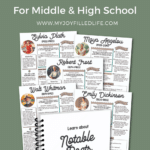

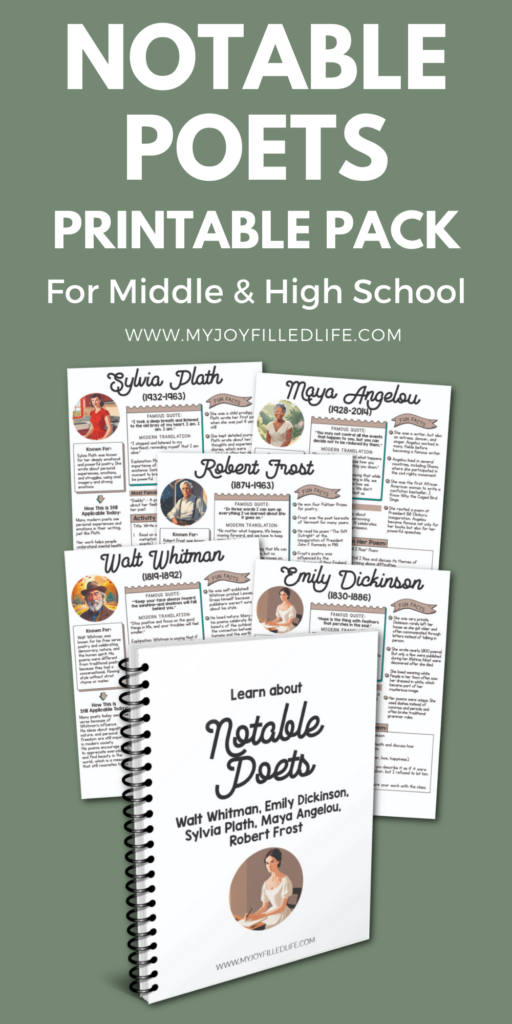
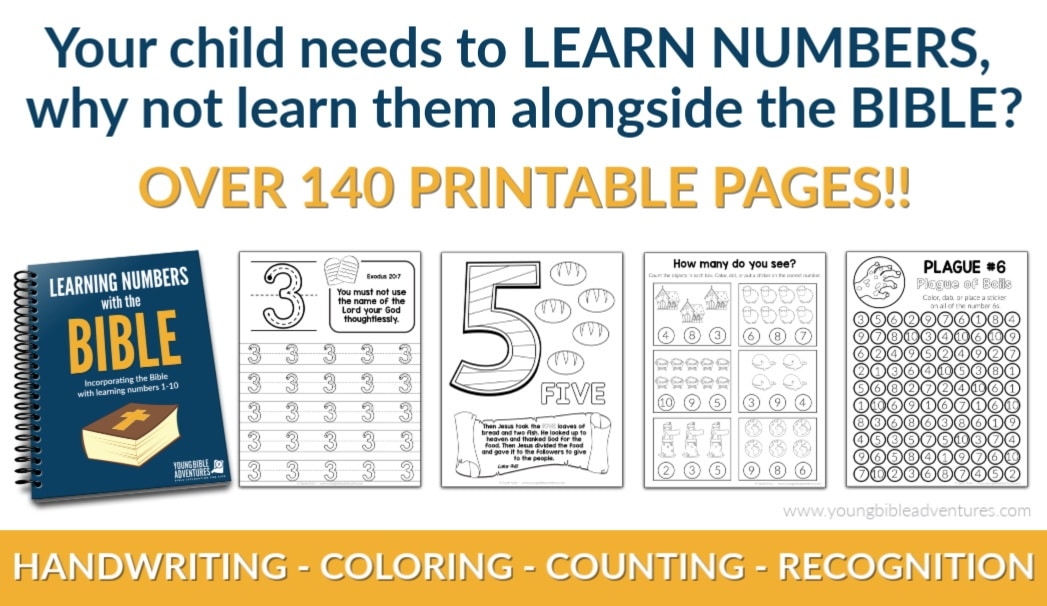
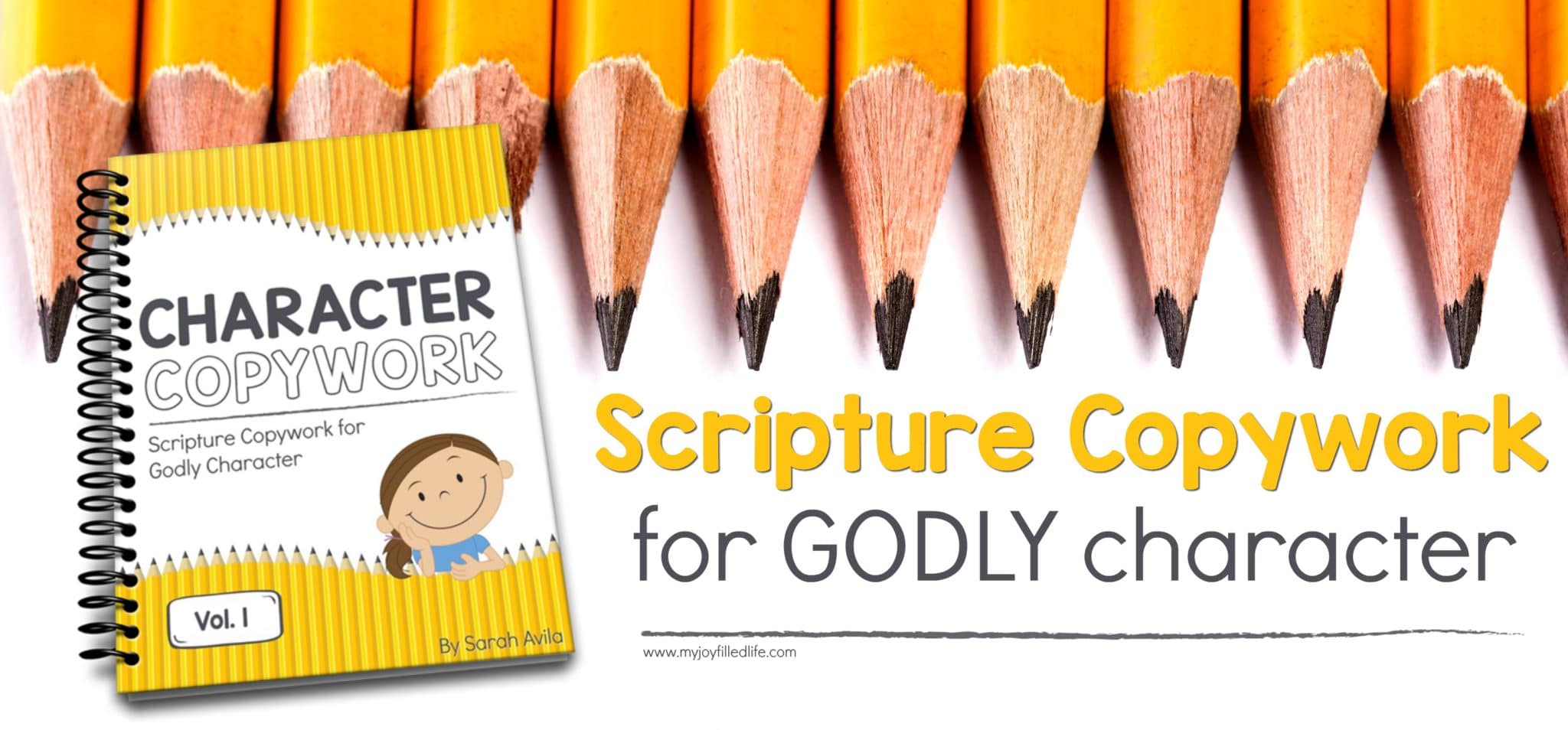
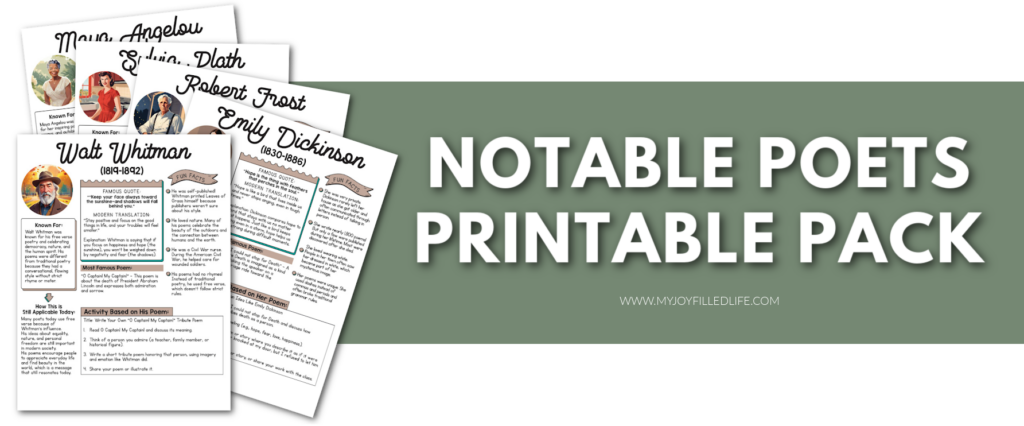
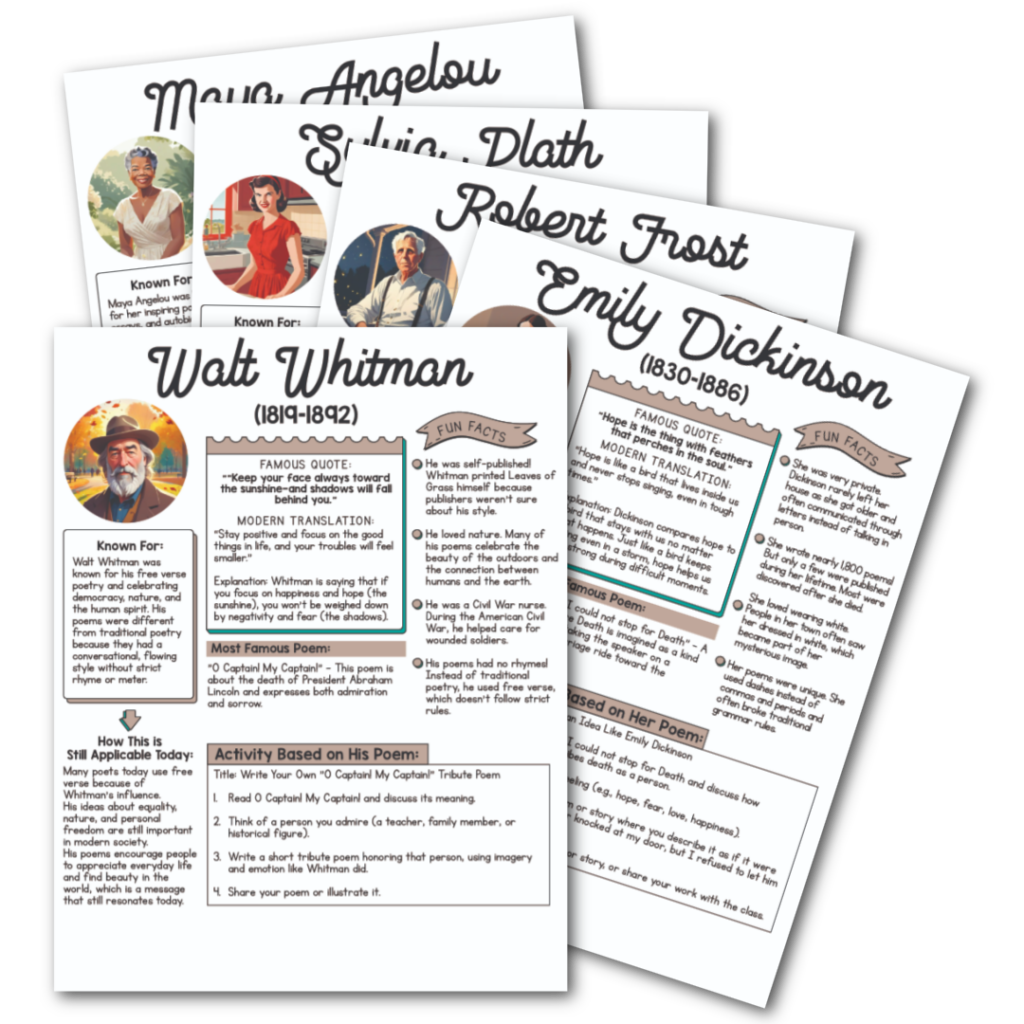
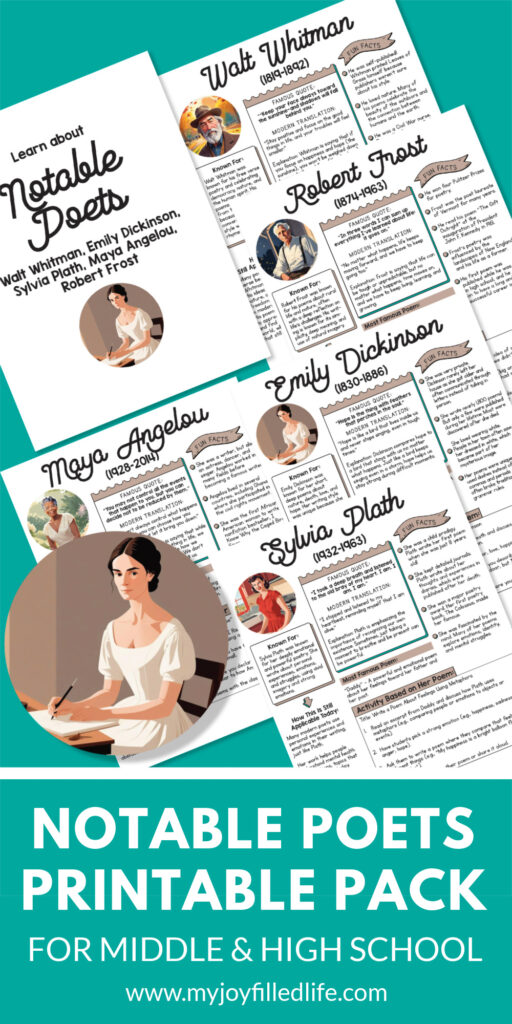

Leave a Reply